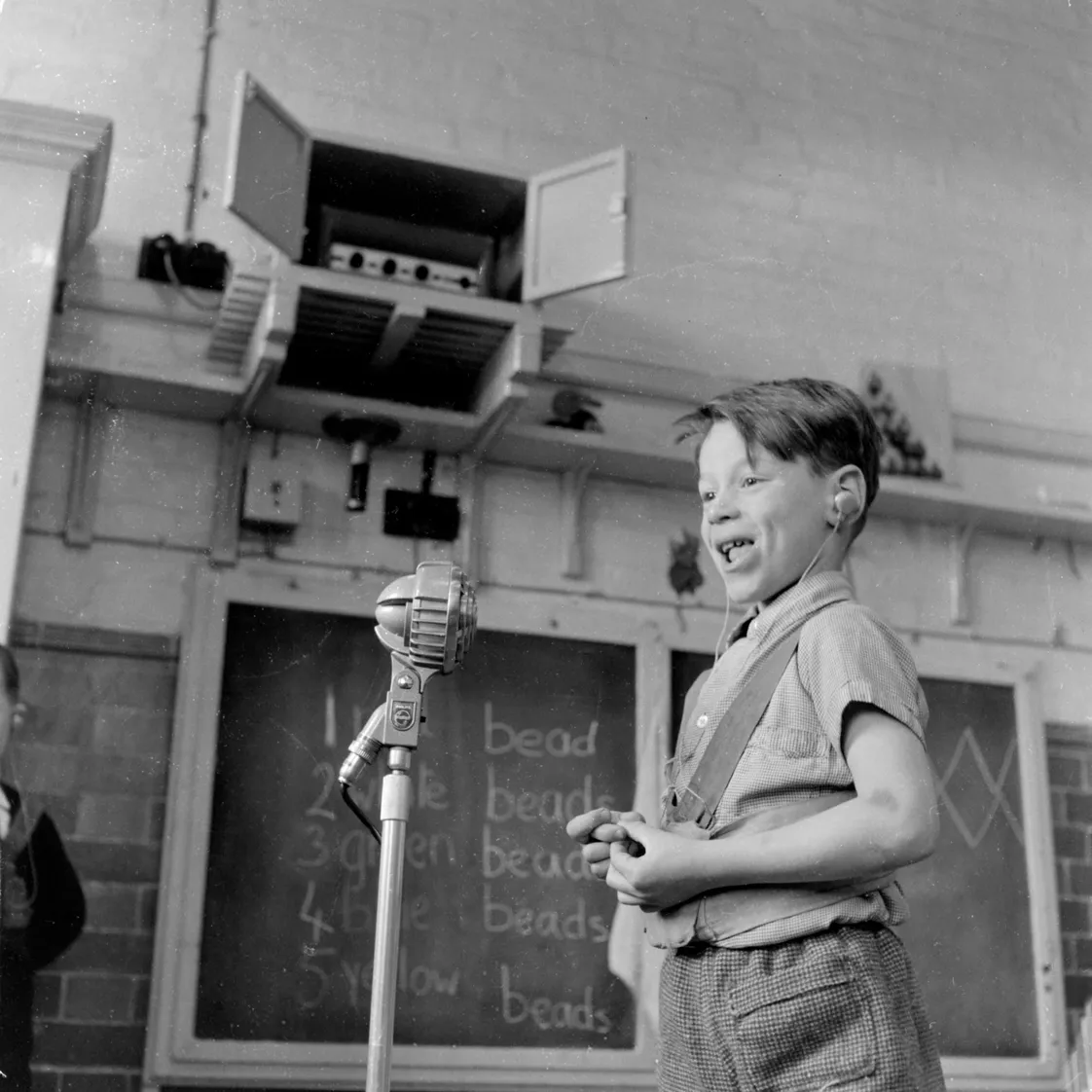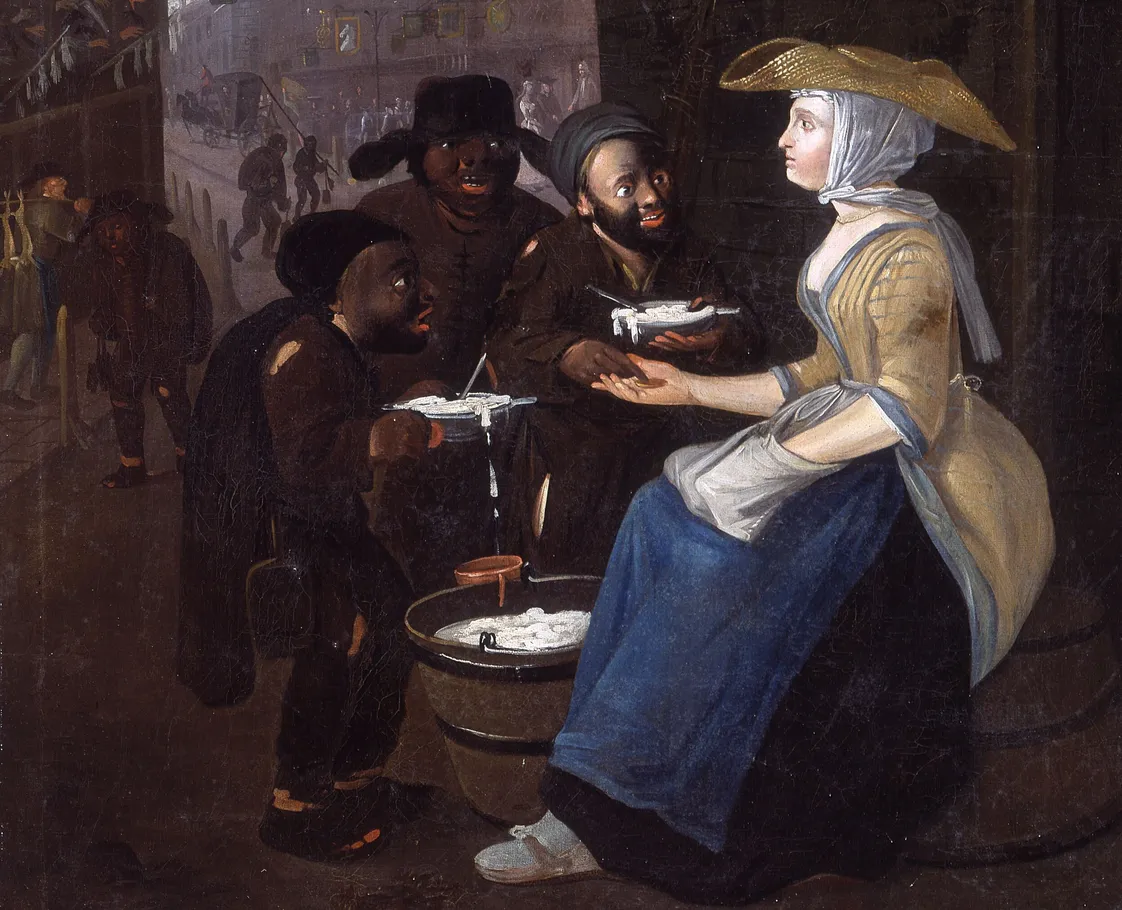13 March 2022 — By Michol Stocco
It's a sign: BSL on a 19th-century child's mug
While sign language or fingerspelling has been around for centuries, the 19th and 20th centuries were significant for its development and acceptance. We find out more from these unusual 19th-century mug fragments in our collection.
London Museum collects archaeological material excavated from all around Greater London. Our Archaeological Archive collection includes over 9,000 site archives dated between 1928 and today, among which sit three intriguing fragments from a creamware children’s mug, produced between 1820 and 1840.
While such creamware mugs are quite common, what makes these fascinating is a pattern of fingerspelling or an earlier version of British Sign Language (BSL) printed in clear blue. This indicates that there was a fair bit of interest and market for BSL crockery as far back as the early 1800s.
Unique design of the fingerspelling mug
The fragments were found in a small excavation in St Stephen's Road, Bow, in 1975. Of the hundreds of thousands of ceramic objects in our archive – the world’s largest – we’ve found only three such tiny fragments with prints of sign language, that too from the 1820s–1840s.
We found that some similar fully intact mugs exist in other museums, private collections and auction houses. But those examples were few. Our mug doesn’t have a maker stamp, so while we don’t exactly know where it was produced since white earthenware with blue glaze was a Staffordshire speciality, says Curator of Making Danielle Thom, it would be safe to suggest it was made in Staffordshire, one of England’s biggest pottery regions at the time.

Two of three fragments of a 19th-century fingerspelling mug in the museum's collection.
Educational tools for deaf children in the 1800s
The mug’s size and subject indicate that it was meant for children. Called ‘children’s ware’ in museum-speak, such mugs and plates were quite popular during the 18th and 19th centuries, especially as presents. While wealthier children were given Chinese porcelain or silver mugs, most children would receive similar decorated ceramic plates and mugs. Some adults might have even kept them as collection/decorative items.
We find some of the earliest examples of such nursery-ware from the early 19th century. Designs included children playing, country life, etc, some with quotes and others with alphabets, like our fingerspelling mug.

An Edwardian alphabet plate with sign language.
“The nature of transfer-printing means that it doesn’t make sense to only produce a small number of something. The preparatory work was sufficiently labour-intensive that it was only justified by using the metal plate multiple times,” explains Thom.
“There are two transfers used on mugs around the 1830s–1840s, with two colours of transfer (blue, black) and two different handle shapes. This implies there was a substantial output… I think they should not be regarded as mass-produced, just one of the many side lines made by factories,” shares mudlark Richard Hemery.
So, while not rare, such mugs were definitely unusual, and special. But lack of makers’ marks and proper documentation makes it difficult to gauge their circulation. We know of a fingerspelling Staffordshire mug that’s part of a museum in the US, suggesting that people travelled with them.
The role of fingerspelling in education
What makes finding these mugs even more significant is that around 50 years later, the 1880 Second International Congress on Education of the Deaf, in Milan, infamously passed several resolutions declaring that sign language was inferior to oralism, and ought to be banned. (Of all the delegates, only one was deaf.)
While this led to a noticeable shift in deaf schools globally, according to Thom, the existence of sign language plates and mugs from the late 19th century suggests there was still some market for these wares in Britain. Some bear the mark of the famous “H. Aynsley & Co (Ltd)”, but those are closer to the 1900s and thereafter.
“It wasn’t until late 18th century that Thomas Braidwood opened the first formal schools for deaf children in Edinburgh and London”
When one looks at the history of the British Sign Language, it’s been found that different versions existed since almost the 7th century. However, one of the earliest known records dates back to a 16th-century marriage registry. Another well-known reference is in Samuel Pepys’ diary, where he writes that a young deaf boy “made strange signs of the fire” to describe the Great Fire of London to his friend Sir Georgie Downing and himself.
He wrote: “But, above all, there comes in the dumb boy that I knew in Oliver's time, who is mightily acquainted here, and with Downing; and he made strange signs of the fire, and how the King was abroad, and many things they understood, but I could not...”
The impact of early education for deaf children
It took around 30 years more for the foundation of BSL as we know it now to be laid. It wasn’t until the late 18th century that Thomas Braidwood opened the first formal schools for deaf children in Edinburgh and London. However, these schools were private. General access to a deaf school had to wait until 1792, with the opening of the London Asylum for the Deaf and Dumb in Bermondsey.

A ballot paper with seven female candidates wishing to gain admission to the 'British Asylum for Deaf & Dumb Females' in Lower Clapton, E.
Coinciding with the industrial revolution, a growth in population meant a rise in the community of people with hearing and speech impairments community as well. Our BSL print mug would have been made around this time. Hemery is “certain they would have been bought by schools and institutions, to be used in a practical way, and as rewards to give children”.
Why the fingerspelling mug still matters today
So whom did our mug belong to? We don’t know.
It could’ve been given to a child as a reward/gift, or part of a collector’s collection. Maybe it was used every day or was kept on a shelf to symbolise something dear to the owner. We can’t know for sure.

A poster printed with work survival signs.
What we do know is that it’s an important but little-explored part of British Sign Language history. And when such examples stand alongside alphabet-ware ceramics, they represent crucial steps in the path to recognition, inclusion and education.
It took around 90 years after the 1880 ban to fingerspelling, for sign language to be reintegrated in schools. It was only in 2003 that the BSL was recognised by the British government. Almost 20 years later, the BSL Act 2022 became law.
The three sherds of presumably a child’s mug carry behind their blue glazed print, a story of hope, future, inclusivity and positivity among London’s strong deaf community.
Michol Stocco is Archaeological Archive Manager at London Museum.









